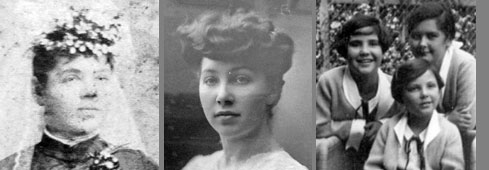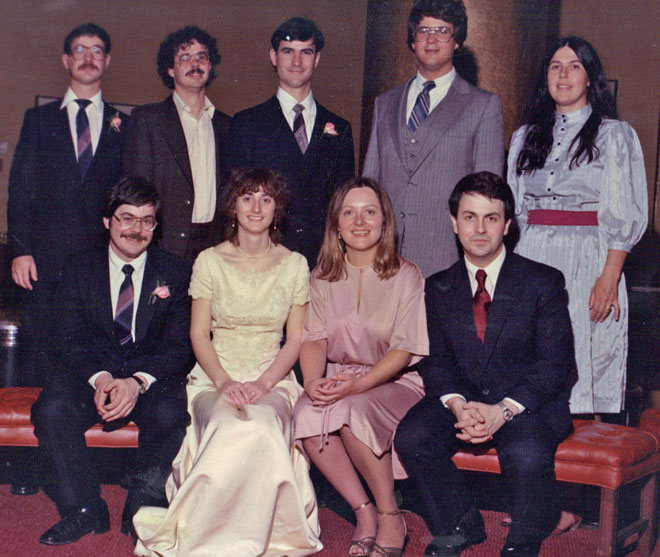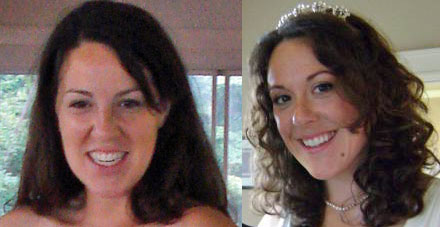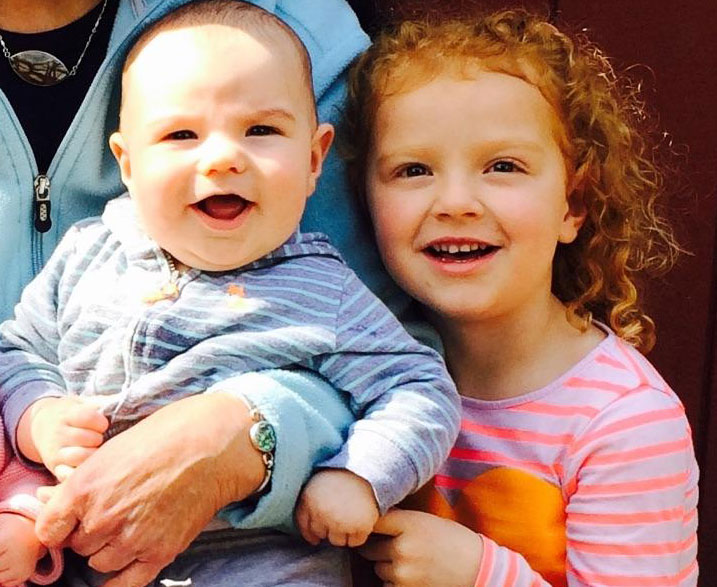On mother’s day it seems most appropriate to celebrate my mother’s maternal line; that is all the female ancestors who passed down their H11a mitochondrial DNA (mtDNA)* to me and my cousins. As far as I know it, there was only one woman born in each generation until my grandmother, who had three girls. Each of her daughters had exactly one girl, but only one of us three had any more girls. Fortunately for the continuation of our mtDNA line, my cousin’s two daughters each have a little girl of their own now.
The furthest back maternal line ancestress that I have found is my great-great-great-grandmother Veronika Ebner (nee Engl) of Winklarn, Bavaria, born sometime around 1800. She had my great-great-grandmother Karolina Wittmann (nee Ebner) born 1831 in Eslarn, Bavaria.
Next we get to the women that I know something about and have pictures of.
My great-grandmother Margarette Katherina Reiner (born Wittmann) is on the far left on her wedding day the 3rd of February, 1889. In the middle is my grandmother, Franziska Thannhauser (born Reiner) in her youth and on the far right her three daughters as children.
My favorite blogger, Roberta Estes of DNA explained, did a post celebrating her maternal DNA which inspired this post. Thank you Roberta.
Here is my favorite picture of the nine grandchildren who all carry my grandmother Fanny’s mtDNA. It was taken at my cousin’s wedding a few decades ago. Yes that is me in pink next to the bride. On the far right, in blue, is the only mother of daughters who carry our mtDNA
And here are my cousin’s daughters who are sending our mtDNA line into the future with their own daughters. Thank you L and L!
I took these pictures on their wedding days, of course. Can you tell they are sisters?
*For those readers not into genetic genealogy, we all have little symbiotic organisms in every cell called mitochondria that provide our cells with energy. Since they come to us in the egg from our mother, their DNA can be used to trace our maternal line. However it changes so slowly that it has limited use in genealogy.




A great post, cousin Kitty! I only wish I had thought of doing something similar as yesterday, I was thinking of my maternal lines, especially my mother who passed away about 9 months ago.
Patti so sorry for your loss. So next year so a photo journal of your mtDNA line like this 🙂 And I just added the next generation’s photo
HI, Kitty! I was just referred to your blog and heard you love to answer questions!
So mine is what do you do when your mtDNA has no “0” matches? I understand, and I hope I’m wrong, that if you are not a 0 match, you will be too distant to make any connection and find a common relative.
Apparently, I have one of those rare mutations that makes me an oddball in my DNA matches! (WHO would have guessed! LOL!) If I’m right so far in what I understand, is there another angle i can take to find a common mt ancestor? I’m trying to find my 6th Great grandmother. Maybe that’s not possible with mtDNA either, but I have her daughter’s name, and possibly he father, but haven’t connect the daughter with a Mom yet.
Let me know if you need any clarification, but any suggestions would be appreciated!
Thanks so much!
Carol –
What you do is find a female line descendant of a possible candidate of your 6th grandmother’s mother or grandmother and get them to test.
The mtDNA database is just not large enough to be sure to have a match unlike the enourmous autosomal databases everywhere.